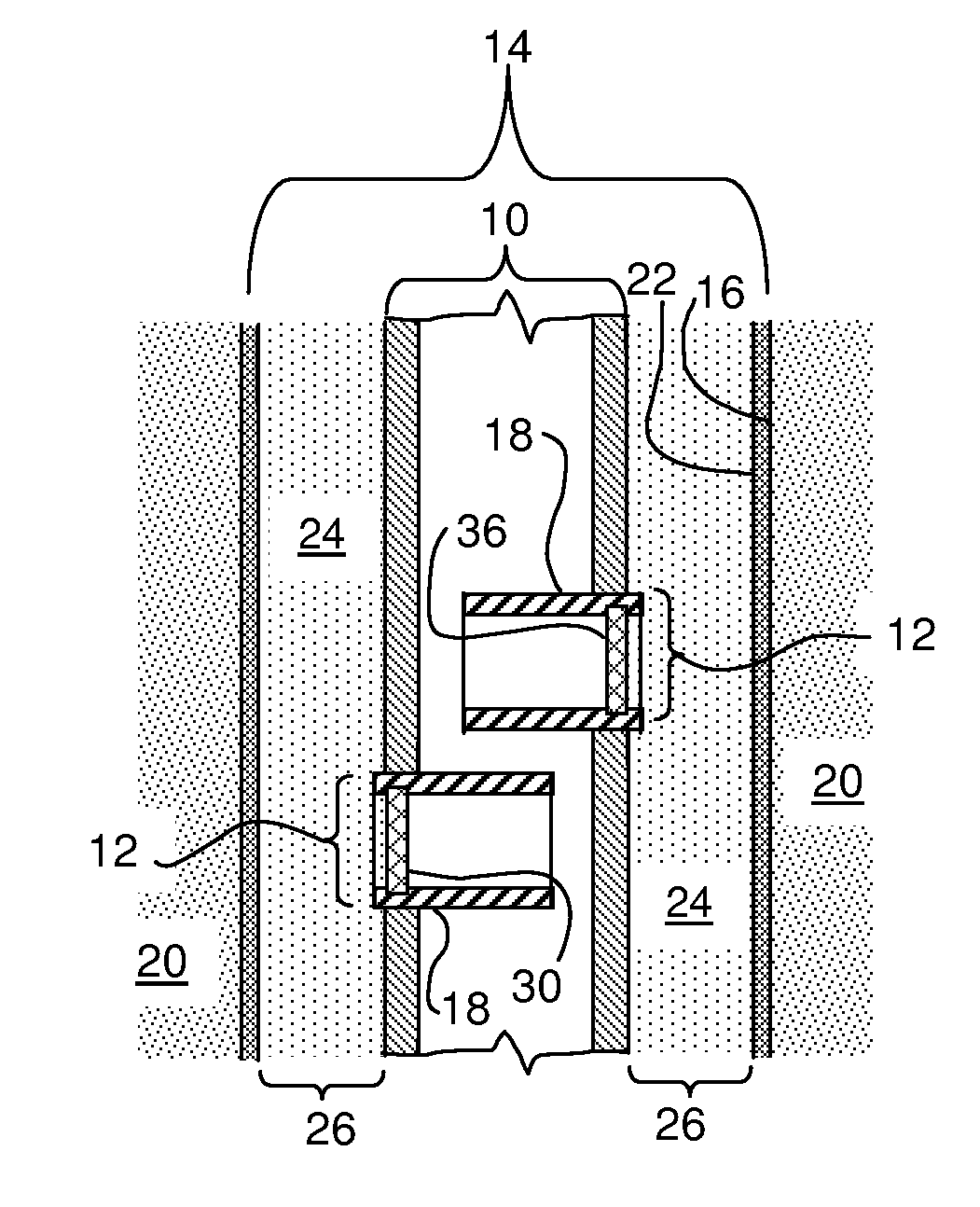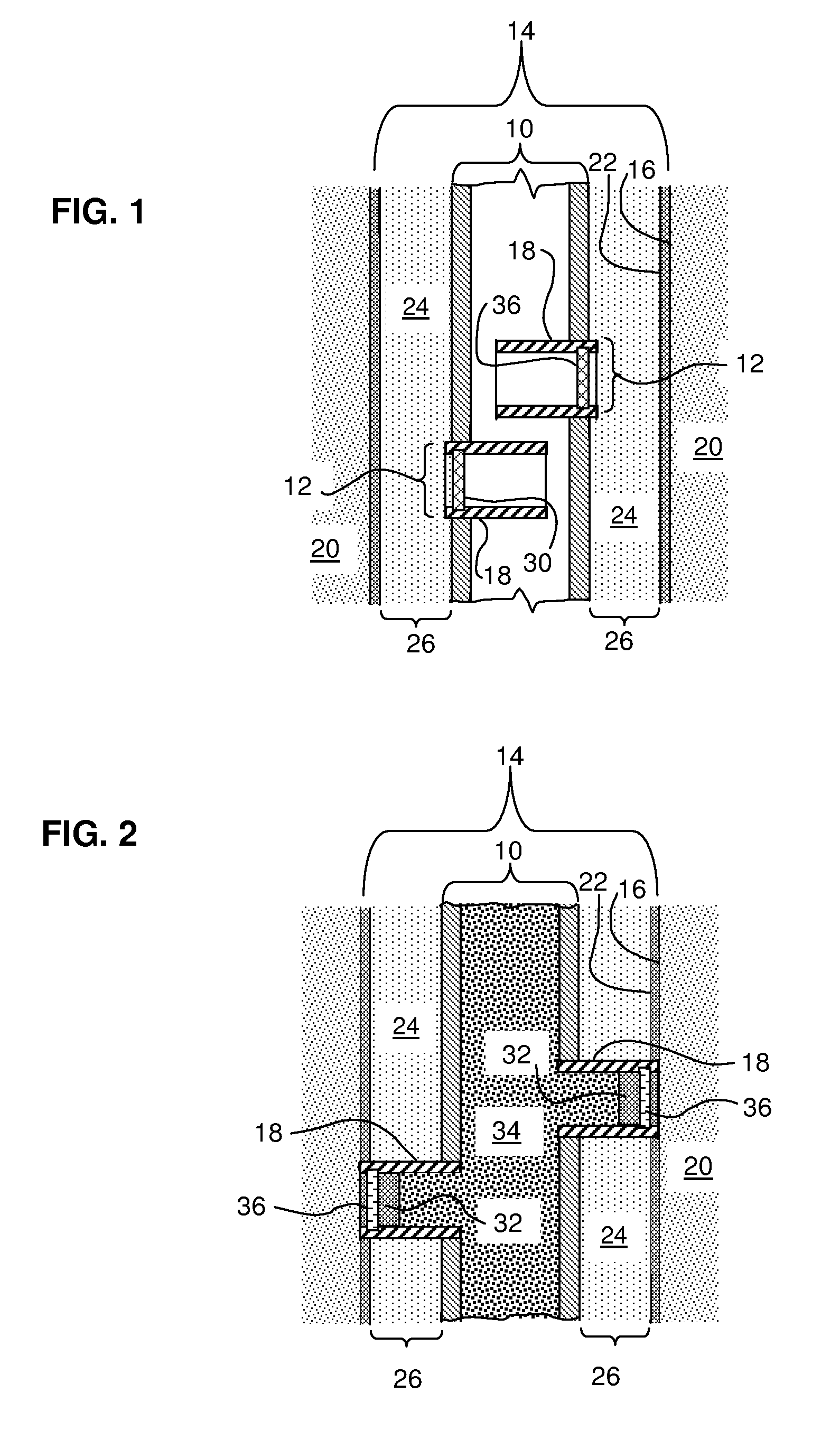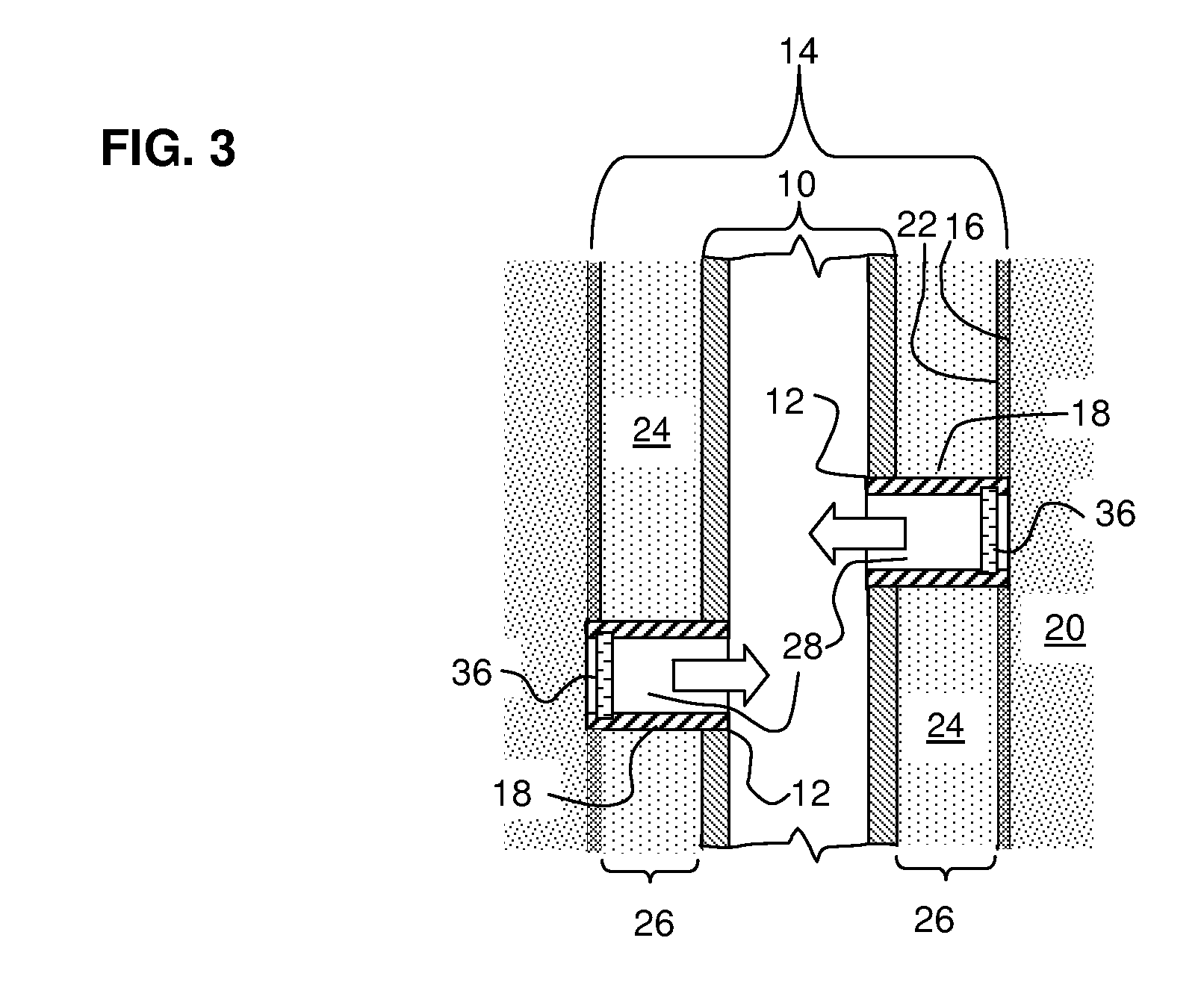Procedures and Compositions for Reservoir Protection
a reservoir and composition technology, applied in the direction of drinking water installation, wellbore/well accessories, construction, etc., can solve the problems of reducing permeability, compromising the ability of wells to flow hydrocarbons, and possible damage to the formation, so as to reduce the viscosity of the drill-in fluid and increase the water viscosity
- Summary
- Abstract
- Description
- Claims
- Application Information
AI Technical Summary
Benefits of technology
Problems solved by technology
Method used
Image
Examples
examples
[0096]Shown in FIG. 4 is a graph of fluid leakoff as a function of time through a 400 md ceramic disk at 250° F. (121° C.) and 300 psi (2.1 MPa). The base fluid is 13.0 ppg (1.6 kg / liter) CaCl2 / CaBr2 brine, and includes 4% WG-3L VES and 6 pptg (0.7 kg / m3) VES-STA viscosity stabilizer and 1 gptg GBW-407L fish oil breaker available from Baker Oil Tools. It may be seen that the addition of 10 pptg (1.2 kg / m3) MgO fluid loss control agent (FLCA) greatly reduces the amount of fluid leaked off during the experiment.
[0097]FIG. 5 is another graph of fluid leakoff over time, in this case through a 2000 md ceramic disk at 250° F. (121° C.) and 300 psi (2.1 MPa), where the fluid used is the same as in FIG. 3. Again, it may be seen that the addition of 10 pptg (1.2 kg / m3) MgO fluid loss control agent (FLCA) greatly reduces the amount of fluid leaked off during the experiment.
[0098]Presented in FIG. 6 are two photographs of the same 400 md ceramic disk used in FIG. 3 showing the VES pseudo-filte...
PUM
 Login to View More
Login to View More Abstract
Description
Claims
Application Information
 Login to View More
Login to View More - R&D
- Intellectual Property
- Life Sciences
- Materials
- Tech Scout
- Unparalleled Data Quality
- Higher Quality Content
- 60% Fewer Hallucinations
Browse by: Latest US Patents, China's latest patents, Technical Efficacy Thesaurus, Application Domain, Technology Topic, Popular Technical Reports.
© 2025 PatSnap. All rights reserved.Legal|Privacy policy|Modern Slavery Act Transparency Statement|Sitemap|About US| Contact US: help@patsnap.com



